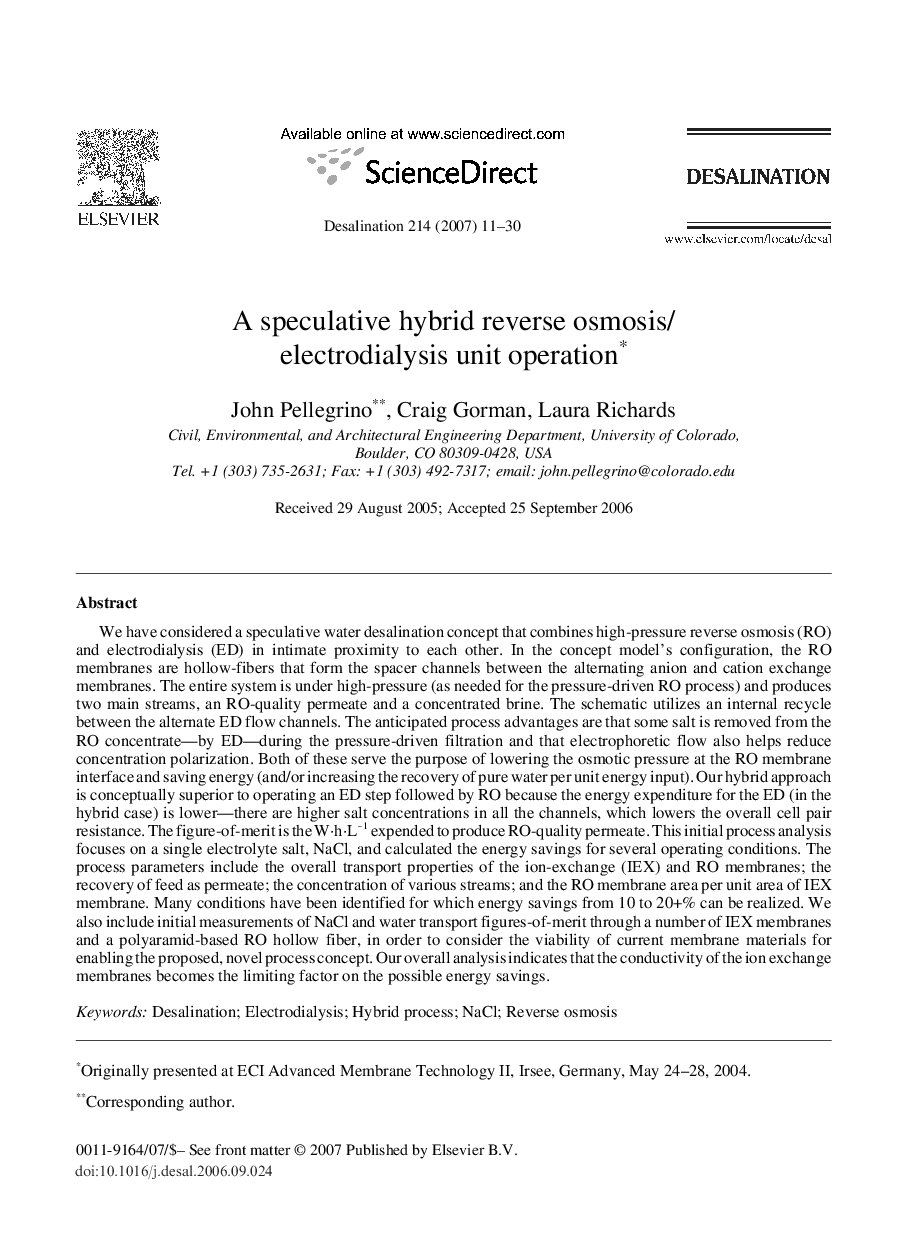| کد مقاله | کد نشریه | سال انتشار | مقاله انگلیسی | نسخه تمام متن |
|---|---|---|---|---|
| 628014 | 1455476 | 2007 | 20 صفحه PDF | دانلود رایگان |

We have considered a speculative water desalination concept that combines high-pressure reverse osmosis (RO) and electrodialysis (ED) in intimate proximity to each other. In the concept model’s configuration, the RO membranes are hollow-fibers that form the spacer channels between the alternating anion and cation exchange membranes. The entire system is under high-pressure (as needed for the pressure-driven RO process) and produces two main streams, an RO-quality permeate and a concentrated brine. The schematic utilizes an internal recycle between the alternate ED flow channels. The anticipated process advantages are that some salt is removed from the RO concentrate—by ED—during the pressure-driven filtration and that electrophoretic flow also helps reduce concentration polarization. Both of these serve the purpose of lowering the osmotic pressure at the RO membrane interface and saving energy (and/or increasing the recovery of pure water per unit energy input). Our hybrid approach is conceptually superior to operating an ED step followed by RO because the energy expenditure for the ED (in the hybrid case) is lower—there are higher salt concentrations in all the channels, which lowers the overall cell pair resistance. The figure-of-merit is the W·h·L−1 expended to produce RO-quality permeate. This initial process analysis focuses on a single electrolyte salt, NaCl, and calculated the energy savings for several operating conditions. The process parameters include the overall transport properties of the ion-exchange (IEX) and RO membranes; the recovery of feed as permeate; the concentration of various streams; and the RO membrane area per unit area of IEX membrane. Many conditions have been identified for which energy savings from 10 to 20+% can be realized. We also include initial measurements of NaCl and water transport figures-of-merit through a number of IEX membranes and a polyaramid-based RO hollow fiber, in order to consider the viability of current membrane materials for enabling the proposed, novel process concept. Our overall analysis indicates that the conductivity of the ion exchange membranes becomes the limiting factor on the possible energy savings.
Journal: Desalination - Volume 214, Issues 1–3, 15 August 2007, Pages 11-30